Follow Your Nose to Sensational Scents!
Men’s fragrances, often known generically as men’s cologne, can be the perfect finishing touch to any ensemble, adding a scintillating scent that helps you excite every one of the five senses and set the mood for your day or your evening.
- Follow Your Nose to Sensational Scents!
- The History of Fragrances
- The Connection Between Fragrance Concentration and Terminology
- Common Scent Components and How Fragrance Notes Develop
- The Olfactory Families: How to Classify Scents
- The Five Common Fragrance Classifications
- How Scents Are Sourced
- What To Consider When Considering a Fragrance
- How To Select Your Perfect Scent
- Some of Our Favorite Fragrances for Every Occasion
- How To Correctly Apply Fragrances
- The Do’s & Don’ts of Wearing Fragrances
- How To Properly Store Fragrances
- Further Recommended Reading
- Conclusion
- Outfit Rundown
But there are also countless questions to be answered regarding fragrances. Which fragrance is right for you? Which fragrance will most interest potential romantic partners? What is the best way to wear fragrance?
This guide will answer all of these questions and more and is also brimming with additional useful information like the history of fragrances, how fragrances are made and categorized, what you should and should not do when wearing fragrances, and our recommendations for the best fragrances.
The History of Fragrances
Perfumes & Scented Oils Were Developed in the Ancient World

Perfumes have been in existence since at least the time of ancient Mesopotamia and Egypt and were also worn in ancient India from as far back as 3300 to 1300 BC.
Originally a rudimentary concoction that consisted of sweet-smelling ingredients pulverized and mixed with oils, early fragrances served a variety of functions, from masking unappealing odors to serving an important function in religious ceremonies. These oils could be applied to the skin, but among the ancient Greeks, Romans, and Persians, they were most often applied to handkerchiefs, which were then carried on the person like a nosegay or sachet.




The oldest extant vial of perfume was discovered in Pyrgos, Cyprus, and is thought to be over 4000 years old. It was found in a structure that archaeologists believe was a gigantic perfumery. With an area of 43,000 square feet, the perfumery was filled with the equipment used to make ancient perfumes, including 60 stills. Many of the herbs and spices discovered on the premises are still in use today and were just as coveted millennia ago as they are now.

The First Known Perfume Maker
Tapputi
The oldest known perfume maker was a woman named Tapputi, who worked as a chemist in the royal palace of Babylonian Mesopotamia. Her name and occupation are mentioned in a cuneiform tablet dated to around 1200 BC, and this source also documents some of her ingredients, including flowers, calamus, cyperus, myrrh, and balsam, all mixed with oils.
The Impact of Near & Middle Eastern Chemical Discoveries on Fragrances

At the dawn of the Islamic Golden Age, Muslim scholars were making numerous discoveries in a variety of fields, including chemistry. Their research had a direct impact on the development of fragrances.
By the 9th century, academic and scientific treatises on perfumes and fragrances were regularly published, the most notable being the Book of the Chemistry of Perfume and Distillations. This tome, written by the Arab chemist al-Kindi, contained more than one hundred recipes for various types of fragrances.

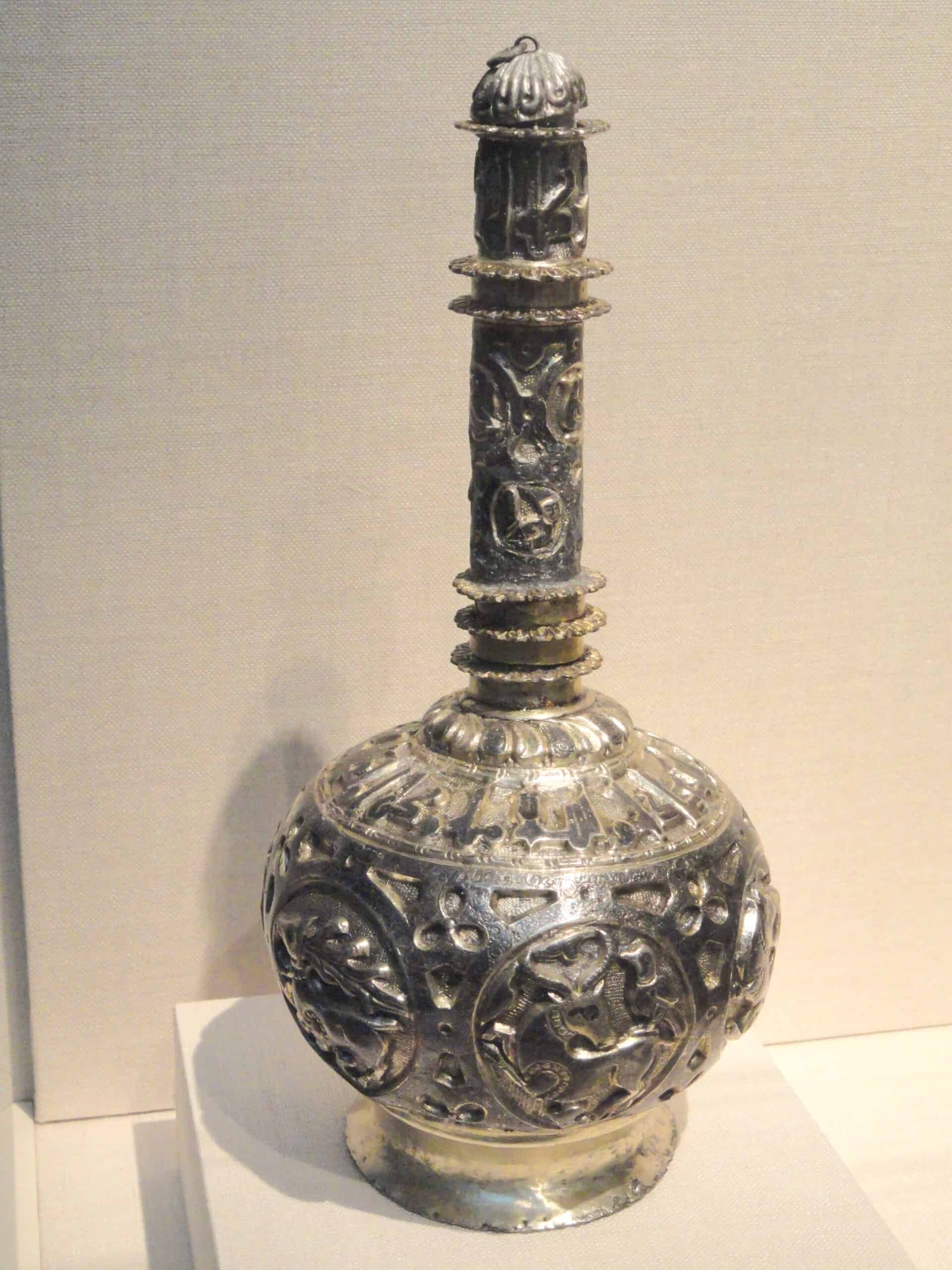
Historians believe it was a Persian chemist named ibn-Sina who first experimented with extracting oils from roses and other flowers by distilling them. Before that, most perfumes were not true liquids but instead, a blend of crushed spices and herbs soaked in oil. These perfumes tended to be extremely strong and, at times, noxious, so when more subtle perfumes and fragrances like rosewater were introduced, they became very popular very quickly.
Crusaders Bring Fragrances Westward

Starting in the 11th century AD, the peoples of medieval Europe came into direct contact with the Islamic world during a series of invasions known as the Crusades. While perfumes had already been brought to Western Europe in smaller quantities, the Crusades were a watershed moment as Europeans were introduced to the important advancements the Muslim world had made in the science of fragrances.
Fragrances soon became an extremely important and valuable industry in Europe. The use of fragrances became a common status symbol, and many European nobles trumpeted their wealth by wearing expensive perfumes from the Near and Middle East. Conversely, more puritanical authorities, like some leaders in the Roman Catholic Church, condemned the wearing of fragrances as sinful and decadent.

Recipe books and guides proliferated, but some perfume makers coveted their creations to the degree that they used hidden laboratories that could only be accessed by secret passageways. This was done to prevent others from stealing their recipes or being able to surveil their advancements.
Hungarian fragrance makers took an important step in the development of the modern fragrance industry when, in the 14th century, they devised a method to craft alcohol-based perfumes. Alcohol was an important fixative to ensure both the vitality and longevity of early scents.

Fragrances were used as
Medicine?
Many schools of ancient and medieval medicine were based around the theory of miasma: essentially, the belief that illness in the body was caused by foul-smelling, unclean air or vapors. It was assumed that sweet-smelling air had the capacity to negate the effect of bad air, and therefore it was erroneously believed that pleasant scents, like those of fragrances, could be used to fight disease. Of course, fragrances did not in themselves have any real curative properties, but no doubt they did help to sweeten the odor of hospitals and sick rooms.
Giovanni Maria Farina Invents “Cologne”

In 1709, an Italian chemist living in Cologne, Germany named Giovanni Maria Farina developed a spirit-citrus perfume he called Eau de Cologne, which is French for “water of Cologne,” to pay homage to his new town.
Little did Farina know that he had branded a product that most people would use for hundreds of years. His creation became a sensation, and soon it was in nearly every royal house across Europe. Also known as aqua mirabilis, which is Latin for “miracle water,” a single vial could be sold for half the salary of a civil servant in Germany at that time. It was unlike any fragrance Europe had ever seen.
“I have found a fragrance that reminds me of an Italian spring morning, of mountain daffodils and orange blossoms after the rain.”
Giovani Maria Farina
With such a revolutionary product, many begin to believe and spread legends that the water in Cologne had powers to ward off the bubonic plague, with others claiming that it could even function like the mythical fountain of youth. Doctors would encourage patients to drink water from Cologne, which was believed to repel fleas, and to this day, many flea shampoos still contain the same citrus oils found in many perfumes.
Nearly ninety years later, France established free trade in Cologne, Germany. Soon there were many fragrances being sold under the same nonproprietary name, Eau de Cologne. The quality of some was greater than others, but Farina’s original Eau de Cologne continued to be the gold standard.

Farina’s Eau de Cologne is Still Sold Today!
Farina’s original Eau de Cologne has been in almost continuous production since its creation and is still made today, although the formula remains a secret. The original shop at Obenmarspforten, which Farina opened in 1709, is still open and is one of the oldest and one of the most prolific fragrance manufacturers in the world.
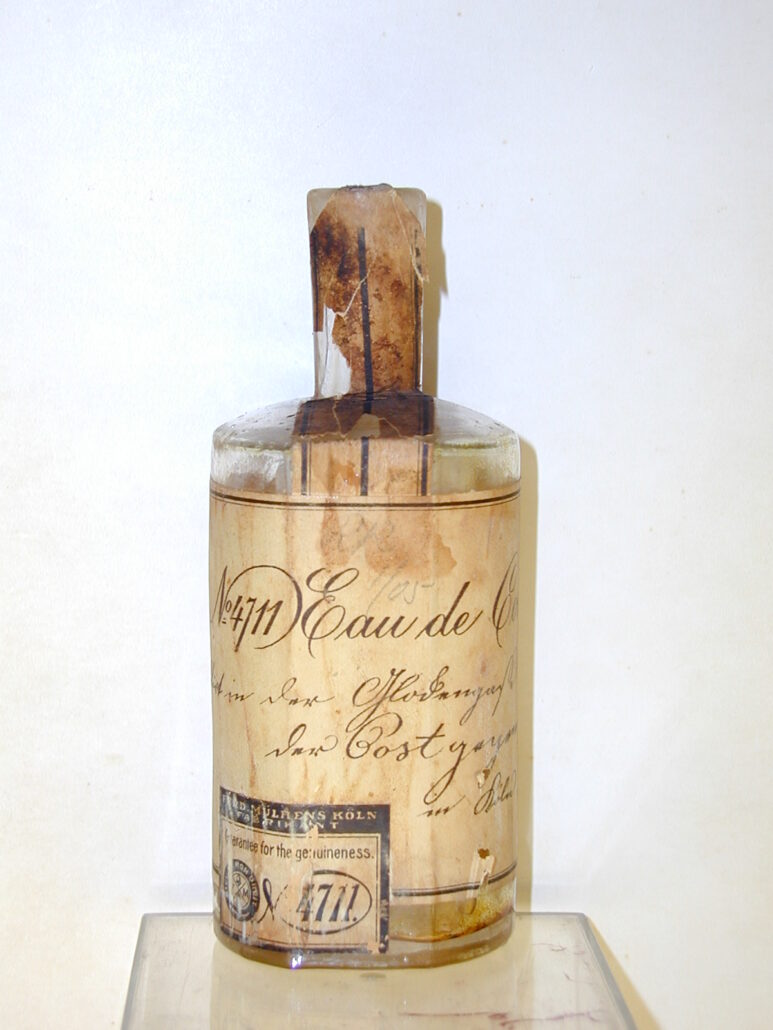
By the early 1800s, Jean Marie Joseph Farina, a grand-grand-nephew of Farina, took the reigns of the business and opened his own store in Paris, which was eventually sold to Roger & Gallet, the current owners to the rights to Eau de Cologne extra vieille.
The Modern Fragrance Industry Develops in the 20th Century

The fragrance industry remained fairly static until the 20th century when modern manufacturing processes allowed for the creation of fragrances on a previously unheard-of scale. Traditional fragrances like Eau de Cologne were soon joined by an ever-expanding range of fragrance products like spray-on deodorant, body sprays, and other scents of various qualities.
The increased scale of production meant that fragrances could be churned out at heavily reduced costs, making fragrances more accessible than ever before, although this industrialization of the process often came at the price of cheaper-to-make synthetic ingredients.
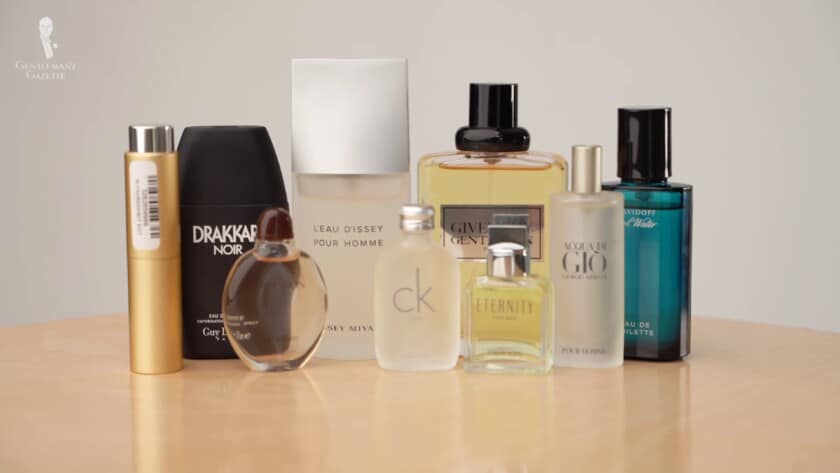
The Best and Worst Fragrances of the 80s and 90s
Fragrances also revived their position as a status symbol as fashion houses vied to release signature scents, often at inflated prices, as another product for their brand-conscious patrons. It did not take long for leather makers like Gucci, garment makers like Giorgio Armani and Tom Ford, and even athletic manufacturers like Addidas to start producing their own lines of fragrances, competing directly with the more established houses that only crafted scents.
Fragrance FAQ
Do I have to wear fragrance?
No, you do not. While a fragrance is a great addition to any menswear ensemble, it is not a necessary component. This guide will help you determine whether or not you will benefit from wearing a fragrance.
What is the difference between a fragrance, a cologne, and a perfume?
Technically speaking, a fragrance is any scent applied to the body. Cologne and perfume both refer to relative concentrations of how strong a fragrance is. However, the term cologne is often used colloquially to refer to any fragrance intended for men, while perfume refers to a fragrance intended for women.
What is the best fragrance for me?
Determining your ideal cologne is a complicated process that involves where you intend to wear the fragrance, how it interacts with your body chemistry, and how much you like the fragrance. Ultimately, the choice is yours, and the best fragrance is whatever fragrance makes you feel confident and can be worn unobtrusively daily. This guide will help you determine how to find such a fragrance.
What is the most popular men’s fragrance?
Ultimately, the relative popularity of a fragrance is immaterial, as your scent should match you and not the buying habits of other men. Traditional scents associated with men usually come from the Woody, Aromatic, and Fresh scent families discussed in this guide.
Is it okay to wear a unisex fragrance or a fragrance intended for women?
Yes, it is. While certain scent families are traditionally associated with men, ultimately, the choice of what scents to wear is your choice, and you should not feel bound by gender norms. If a fragrance works for you, you should wear it.
What are fragrance notes?
Notes refer to the three different evolutions that your fragrance goes through when you wear it. The Top Note is apparent when the fragrance is first applied, the Middle Note is noticed immediately after the Top Note, and the Base Note develops as the fragrance begins to wear off.
Where is it best to apply fragrance?
Body heat helps release the scent of a fragrance in a steady stream, and the hottest parts of your body are the pulse points because of regular blood flow through those areas. The pulse points are behind the ears, at the nape of the neck, inside the wrists, elbows, and your knees.
How much fragrance should I wear?
As with most things in life, when it comes to fragrance, less is more. You should apply no more than one or two spritzes or dabs of fragrance at a few of your preferred pulse points.
Is it possible to wear too much fragrance?
Yes! Wearing too much fragrance can be distracting and give the impression that you are attempting to mask a worse smell under the fragrance. Intense fragrances can make others nauseous or give them headaches.
Do fragrances come in different concentrations?
Yes, they do. From most to least concentrated, the progression is Parfum, Eau de Parfum, Eau de Toilette, Eau de Cologne, and Eau Fraiche.
How long will a fragrance last?
Fragrance duration is affected by various factors, ranging from body chemistry, the weather, and your activities, but in general, fragrances in higher concentrations will last longer, sometimes up to eight hours, while lower concentrations may only last for a couple of hours.
Should I reapply my fragrance?
Yes, in most cases, you will need to reapply or change your fragrance throughout the day. Be sure to avoid putting on too much, however, and remember that the scent will seem less potent to you as the day progresses but not to others.
What is the best way to store a fragrance?
Fragrance potency is degraded by heat, light, and humidity, so you want to store your fragrances in such a way as to protect them from these forces. Therefore, a small cabinet in your bedroom, where you can easily access your fragrances, is a great option. Be wary of storing fragrances in your bathroom, where humidity and heat from showers can degrade them.
The Connection Between Fragrance Concentration and Terminology

Today, eau de Cologne, or simply cologne, is used as a general term for any fragrance intended to be worn by men. But in fact, cologne is also used as a term to describe the relative concentration of scent in a fragrance.
Modern fragrances consist, most basically, of an aromatic compound in some kind of a matrix. The precise name of the fragrance is significant and will inform you as to how concentrated those aromatic compounds are.
| Fragrance Type Name | Percent of Concentration |
|---|---|
| Parfum | 20% to 30% |
| Eau de Parfum | 15% to 20% |
| Eau de Toilette | 5% to 15% |
| Eau de Cologne | 2% to 4% |
| Eau Fraiche | 3% or less |
While many of these terms are popularly used interchangeably, they do, in fact, have a definitive meaning that reveals how concentrated a fragrance is.
Quick Tip!
Concentration indicates both the innate intensity of the fragrance and how long its scent tends to linger, with the most concentrated fragrances enduring for up to eight hours while the least will often begin to fade after two hours. The term sillage is used to refer to the projection of the scent and duration of time that it will hang in the air after you leave.

Understanding the three meanings of
Cologne
As you may have gathered, there can be some confusion surrounding the exact meaning of the word “Cologne” as it pertains to fragrances. Effectively, in this context, “cologne” can have three meanings:
- A specific citrus-based fragrance created by Giovanni Maria Farina in 1709
- A particular relative concentration of aromatic compound in a fragrance.
- A generic term that denotes a fragrance for men, sometimes used in combination with the term “Eau de Toilette.”
Common Scent Components and How Fragrance Notes Develop
The recipe of most fragrances remains a closely guarded secret, although every fragrance sold in stores is generally described based on its dominating scents. Similar to the way we deconstruct the flavor profiles of wine and whisky in our other guides, fragrance experts and critics do the same.
When describing the scent components of a fragrance, we typically break it down into three separate notes:
| Note Name | What It Is | How It Affects Your Fragrance |
|---|---|---|
| The Top Note | The leading scent you get immediately upon smelling the fragrance. | When you initially smell a fragrance, you first notice the top note, which will dissolve quickly. Like meeting someone, it is the first impression and, therefore, often considered the most important scent. |
| The Middle or Heart Note | A scent profile that is deeper and usually more complex in nature. | When the top note evaporates, you are left with a scent profile that begins to thrive as the head is dissipating. As the body of the fragrance, it is meant to mask the harsher head of the top note that can be overwhelming to some. |
| The Base Note | The scent that begins to appear as the fragrance wears off and the scent trails off into the distance. | As the middle note begins trailing off, the base note comes into focus and is used to harmonize all of the notes and create the scent we enjoy. These are the notes people will sometimes refer to as “intoxicating” as they are often very deep and sumptuous. |
Quick Tip!
In most fragrances, it takes an average of thirty minutes for the base notes to appear after initial application, so it is often a good idea to put your fragrance on about 30 minutes prior to arriving at an event.
The Olfactory Families: How to Classify Scents

Most fragrances combine a family of scents into what is often referred to as a scent profile or pyramid. Rarely will a fragrance be a single scent, and it will instead usually consist of a melody of interconnected scents. It is, therefore, always a good idea to test fragrances before wearing them in public to ensure that you enjoy every individual scent within the fragrance.
The Traditional Family of Scents
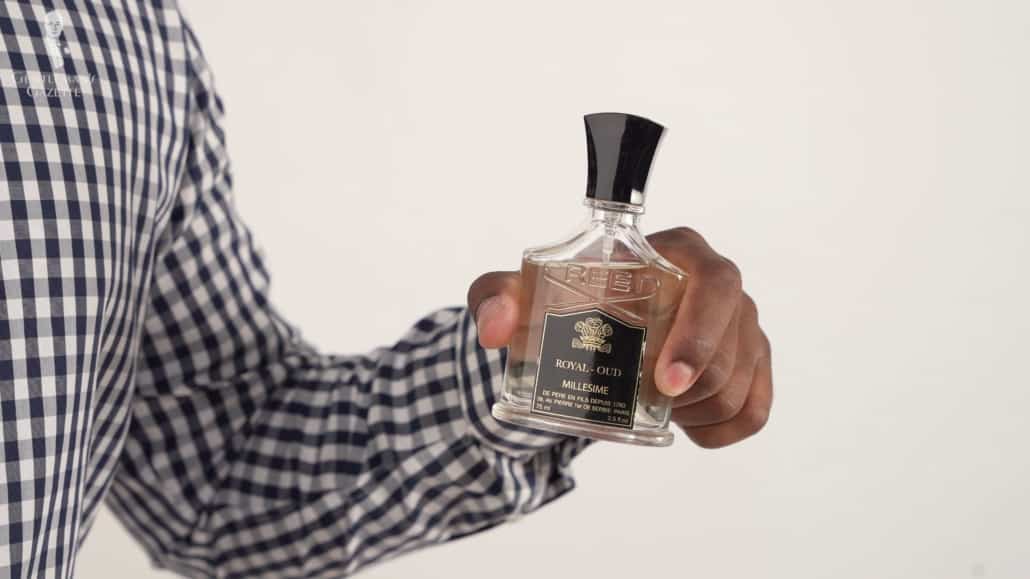


Traditional fragrances are dominated by floral scents from a single flower, such as a rose, or a floral bouquet, which combines more than one flower. Oriental scents are also common and generally smell sweeter than florals, consisting of a combination of vanilla, flowers, and woodsy fragrances. These scents are generally considered unisex.
Two types of scents traditionally associated with men are Woody and Chypre. Sandalwood or cedar are obvious examples of Woody scents, but so are leathers, tars, tobaccos, and honey. Chypre is a more earthy scent often associated with moss and bergamot.
The Modern Family of Scents



Like the more traditional scent family, there is also a modern or contemporary family which was first introduced at the end of the Second World War.
For the most part, these scents are bright, and many are floral. They offer scents of fresh-cut grass, rainfall, and bright vegetation like cucumbers. The modern family also includes the recently popular ocean scents that remind you of the beach or open water. Finally, there is a food category consisting of fresh fruits that aren’t citruses, such as pears, apples, peaches, pineapple, and mango. There is even a dessert category that includes vanilla, chocolate, and hazelnut, among others.
The Five Common Fragrance Classifications
Most critics and perfumers use a semi-standardized fragrance chart, which is a way of outlining the expected aromatic profiles of common fragrance scents. It is essentially a modern way of breaking a fragrance down into easy-to-understand terms.
The chart classifies a fragrance into five families.
| Family Name | Scent Examples |
|---|---|
| Floral | Rose, jasmine, lavender, and wisteria. |
| Oriental | Myrrh, frankincense, styrax, and oponax. |
| Woody | Sandalwood, cedarwood, patchouli, and amber. |
| Aromatic | Sage, rosemary, and thyme. |
| Fresh | Citrines, mint, mowed grass, and sea spray |
From here, each family is broken down into subcategories that are usually arranged in a wheel, like the fragrance wheel shown above.
How Scents Are Sourced

Today, fragrances can be made from a wide range of ingredients combined in new and exciting ways, with the help of modern technology and chemical principles. However, not all changes are for the best, as many synthetic ingredients, which tend to have a chemical tinge to their scent, have become increasingly common as a way for manufacturers to cut costs.
The best ingredients used to manufacture fragrance will ideally be natural, following a common mantra in menswear that natural is almost always best. The most common natural ingredients include:
- Plants
- Barks such as cinnamon and sassafras root.
- Flowers and blossoms such as rose, jasmine, geranium, and citrus trees.
- Fresh fruits like orange, apple, plum, and grapefruit.
- Leaves and twigs such as sage, lavender, rosemary and hay.
- Resins, roots, and bulbs.
- Seeds such as coriander, caraway, cocoa, nutmeg, and anise.
- Wood such as sandalwood, cedar, pine, and birch.
- Various oils and animal compounds.
Quick Tip!
Most synthetic aromas are crafted from a fair-use formula. If you are considering a fragrance that uses a synthetic base to create its scents, you may find an identical or close match in a far less expensive bottle produced by a less-known brand.
What To Consider When Considering a Fragrance
Determine the Proper Balance of Intensity and Longevity

Aside from the scent factor, there are other things that differentiate the quality of fragrances. For a subtle and nuanced scent that is not overpowering, it is very important to focus on acquiring fragrances with low percentages of aromatic compounds. The lower the rating, the less potent the smell. Of course, the scent will also disipate more quickly. A more concreated fragrance will last longer, but also be more noticeable and perhaps overpowering.
Pick a Fragrance That Will Not Iritate Your Skin

You also want to ensure that you purchase a fragrance made from natural ingredients and one that contains little to no alcohol. Synthetic and alcohol-based fragrances can do damage to your skin. If you apply cologne to your neck, you risk developing skin ailments while shaving. Always check the ingredient list and determine if there is any risk of allergy for you and those who may come into contact with it.
Understand the Time and Place for Your Fragrance


Like any component of your ensemble, there is a time and a place for fragrances. Some have light, unassuming scents that are perfect for a day at the office, when you do not want to distract or overpower your coworkers. Alternatiely, other fragrances have an intoxicating and enticing aroma that ought to be reserved for the nighttime hours and intimate occasions.
Fragrances, based on their ingredients, can also be seasonal: fruity and breezy notes are perfect for warm months like summer, while woody and rich notes are a better fit for the colder days of fall or winter.
Find our ten best summer fragrances!
How To Select Your Perfect Scent
Finding a scent that is all your own and that becomes a distinguishing feature of your personal style, often called a signature scent, is a wonderful addition to any outfit.
But selecting a fragrance can be an arduous task. Since it can take more than 30 minutes to experience the full range of scents, it is often difficult to purchase a fragrance without trying it first. Fortunately, most department stores and boutiques will offer samples so you can test the fragrance on your skin and see how it reacts to your natural odor; a harmonious interaction between your natural musk and your chosen fragrance is the secret to finding the perfect fragrance for you.
“A wise man knows cologne is the most powerful weapon in the fight for female attention.”
Marcello Mastroianni
The best tip is to focus first on the description of the scent pyramid used by the fragrance brand in its marketing materials. Since everyone’s nose is different, reviews are not always the best way to pick your scent. When you do select a few to try, ask the shopkeeper to provide you with a sample and leave the store to test each fragrance at your leisure.
Experience the scent for about an hour as you continue your day. Take a walk, go to the movies, attend a meeting, or grab a coffee. This will allow you to see how the fragrance grows in your daily life. It is also a good idea to spend some time with those closest to you. The last thing you want is to spend money on a bottle of fragrance only to find out your spouse or significant other hates the smell.
Once you’ve let it settle, return to the store. If you’re unhappy, try a different fragrance. If you like it, then, by all means, purchase a bottle.
The Five Steps to Buying Fragrance
- Find a scent pyramid you enjoy.
- Determine where you plan to wear the fragrance.
- Figure out who you plan to wear it around.
- Test a sample and wear it for several hours.
- Make your selection.
What do you want your fragrance to say about you? Energetic? Confident?
Be Mindful Of and Courteous To Those Around You!


If you happen to work in an office where there are regulations about the use of scented products, obviously, a bold fragrance is likely not your best bet. You may be better off with something far less potent, or to not wear anything at all.
Similarly, some public areas, especially medical facilities, may also have bans on strong-smelling fragrances that you should always respect.
Many people suffer from allergies or aversions to scent. If you regularly work with or are around people with these issues, always take their comfort into consideration when selecting a new fragrance or deciding whether or not to wear one at all.
In the end, the fragrance you choose is really up to you. However, you need to realize and respect that others have to smell you.
Some of Our Favorite Fragrances for Every Occasion
| Name | Notes | Price (2022) |
|---|---|---|
| 4711 Eau de Cologne | Introduced in 1772, 4711 is the world’s oldest and perhaps most treasured cologne still produced. It features citrus oils, lemon, orange, light floral rose, and sandalwood oil. The 4711 Eau de Cologne’s recommended use is for formal evening affairs. | $30 |
| Ermenegildo Zegna Intenso | A light fragrance that’s ideal for many gentlemen from fashion house Zegna. This designer cologne is fresh and ideal for the office or the lounge. It has top notes of mandarin orange, lemon, and cardamom, with a profile that lasts of cedar, iris, and vetiver. | $55 |
| Acqua di Gio | One of the most popular men’s fragrances of the 1990s, Acqua di Gio was released by Giorgio Armani in 1996 and became an almost instant favorite because of its light and unobtrusive yet distinctly masculine scent that is perfect for daytime wear. Citrine top notes include mandarin orange, bergamot, lime, and lemon, with floral middle notes and a musky base of cedar, oakmoss, and patchouli. | $75 |
| Dior Eay Sauvage | Launched in 1966, Dior’s Eau Sauvage is a classic scent that will suit most occasions. It opens with a strong citrine, woody, and spicy top note, which develops into petitgrain, jasmine, and patchouli, and a bit of carnation, basil, and coriander. It’s base notes are vetiver, sandalwood, amber, oakmoss, and musk. | $85 |
| Lorenzo Villoresi | Based in Florence, Italy master perfumer Lorenzo Villoresi has a fine nose and creates sophisticated Eau de Parfums and Eau de Toilettes that are crafted of quality ingredients so they last. Villoresi offers a wide selection of fragrances to suit many occasions. | $110 |
| Maison Martin Margiela Replica Jazz Club | A traditional and masculine fragrance, it has notes of wood, tobacco, and leather. Ideal for the evening, Maison Martin Margiela Replica Jazz Club will remind you of drinking martinis at Bar Hemingway at the Ritz. | $120 |
| Penhaligon Blenheim Bouquet | Created in 1902 and taking its name from Blenheim Palace, the seat of one of England’s most respected bloodlines, Blenheim Bouquet is a masculine blend of citrus oils, rich spices, and woods. Created more than 100 years ago, it is as appealing today as ever, and certainly worth complimenting with the matching deodorant and washes. Penhaligon Blenheim Bouquet is ideal for date night and intimate gatherings. | $275 |
| Creed Aventus | This unique fragrance was directly inspired by the exploits of Napoleon Bonaparte and comes from the House of Creed, a favored scent-maker for us here at the Gentleman’s Gazette. Aventus features top notes of black currant, bergamot, and pineapple, middle notes of Louisiana birch, and a base of moss and vanilla. It works extremely well in colder months but can also be worn year-round. | $365 |
| Homme Xerjoff | As the name implies, this scent leaves no doubt about who it was made for: men. With a pronounced leather scent and notes of Mediterranean citrus, spices, clove, lavender, lysilang, woods and vetiver this scent is bold and unique at the same time. The flacon is elegant and impressive with a real semi-precious stone insert but at steep pricetag, that doesn’t come as a surprise. | $600 |
Learn about 8 Classic Fragrances!
How To Correctly Apply Fragrances
Less Is More

The first rule to applying fragrance is quite simple: Less is more. In other words, don’t bathe in it. If you are putting it on because you’re trying to disguise odor from not showering, people will notice, and you are much better off showering instead. Your fragrance is not intended to be your scent, it is intended to enhance your natural aroma.
Quick Tip!
When determining how much cologne to put on, recall that you will slowly adapt to your fragrance, and it will become less noticeable to you but not to others. Therefore, people around you will notice your scent more than you will. If you have worn a fragrance consistently and it seems to smell less potent to you, do not apply more fragrance: the smell is just as apparent to others as it was previously, and putting on too much might become overpowering or distracting.
Know Your Pulse Points

The proper way to apply fragrance is to focus on the pulse points: behind the ears, at the nape of the neck, inside the wrists, elbows, and your knees. The pulse points naturally generate heat, and that heat will cause the fragrance to warm up and release continuously over time rather than in bursts.
Watch the Clock

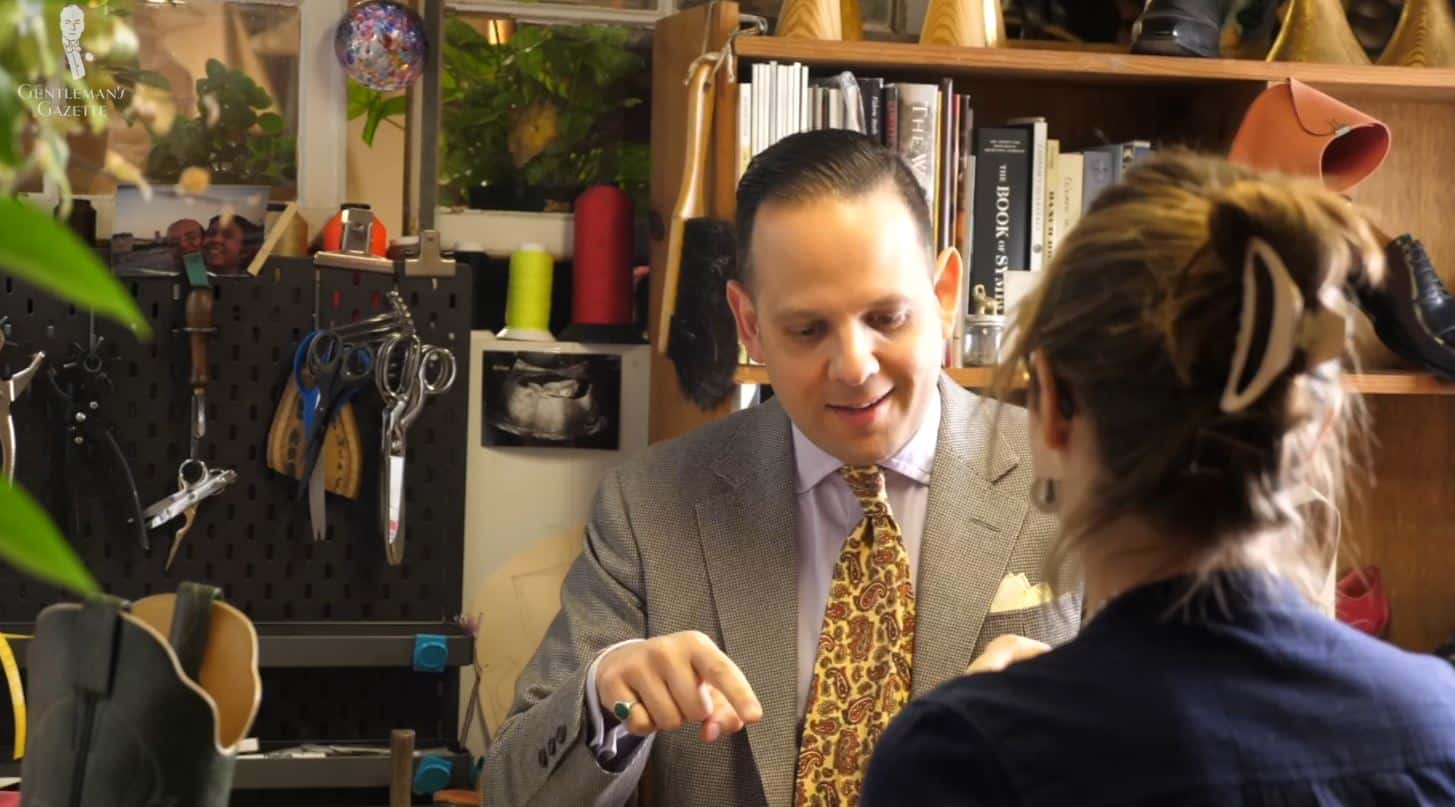

Time is an important factor when it comes to fragrances. Selecting a mild fragrance is ideal in the morning, and just as you wouldn’t wear Black Tie before six, you shouldn’t wear strong colognes until the evening. Fragrance typically releases over a short half-life of two hours. The stronger the percentage of aromatic compounds, the longer the cologne will last. The strongest colognes will last about five to eight hours, which means it’s a good idea to apply it well before going out on the town. This way, you can be sure the top notes won’t be too overbearing for those around you.
Quick Tip!
After applying your fragrance, do not rub it into your skin. Doing so will heat up the fragrance too rapidly and ruin the natural evolution of the notes. Instead, allow the fragrance to rest naturally on your skin.
Fragrances and Your Body Chemistry


A fragrance will also change based on your daily habits. You can expect that eating spicy or fatty foods will increase the intensity of the scent. Therefore, if you know you’ll be going out for fried chicken or Thai food, it may be best to pick a more subtle fragrance. The same goes for your skin. If you have dry skin, you may want to consider a bolder scent, whereas oily skin will cause the cologne to release faster.
Harmonize Your Scents

Recall that it is very likely that your fragrance is just one of many scented grooming products that you will wear throughout the day, and so it is important that all of these smells work in harmony. Your selection of fragrances should pair well with your soap, shampoo, conditioner, shaving products, hair products, and deodorant.
Learn how to layer aftershave, lotion, and fragrance!
The Do’s & Don’ts of Wearing Fragrances
- DO pick a fragrance you enjoy
- DON’T wear a fragrance because it is popular or trendy
- DO test your fragrance before buying it
- DON’T apply your fragrance in public
- DO test your fragrance before buying it
- DON’T replace your shower with fragrance-wearing
- DO reapply fragrance lightly as needed
- DON’T increase your fragrance dosage just because you can no longer smell it
- DO suit your fragrance to the season and occasion
- DON’T wear fragrance in areas where it is prohibited
- DO select a fragrance that works harmoniously with other scented products.
- DON’T wear fragrances around people who are irritated or discomfited by them.
- DO apply fragrance to your pulse points
- DON’T rub in fragrance
- DO select a classic, timeless fragrance
- DON’T buy cheap fragrances with chemically smells and poor longevity
How To Properly Store Fragrances
Avoid Contact with Light, Heat, and Humidity
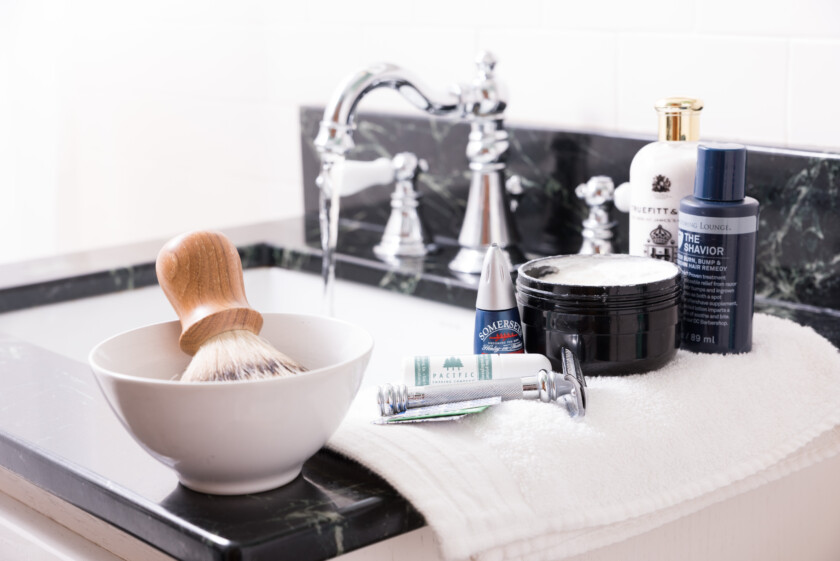
The smell of fragrances comes from the odorous molecules that constitute them, and these molecules can be diffused or damaged by environmental factors. High humidity, light, and significant fluctuations in temperature are the most common culprits that cause fragrances to lose their potency.
Ironically, these factors are commonplace in the bathroom, which is the most popular location for the storage of fragrances: heat and humidity from bathing can actually harm the fragrances stored there. To ensure the maximum longevity and potency of fragrances, they should instead be stored in a dark, cool, dry location with a relatively constant temperature, like a cabinet or wardrobe in your bedroom or dressing room, where they can still be easily accessed while getting ready.
Storing your fragrance in its original box is an easy way to protect it, although some fragrance devotees go so far as to store their collections in specially-made climate-controlled refrigerators. Keep in mind, also, that reductions in fragrance potency will be difficult to notice, so do not feel like you have “ruined” your fragrance by keeping it in the bathroom; just be mindful that it is not best practices to do so.
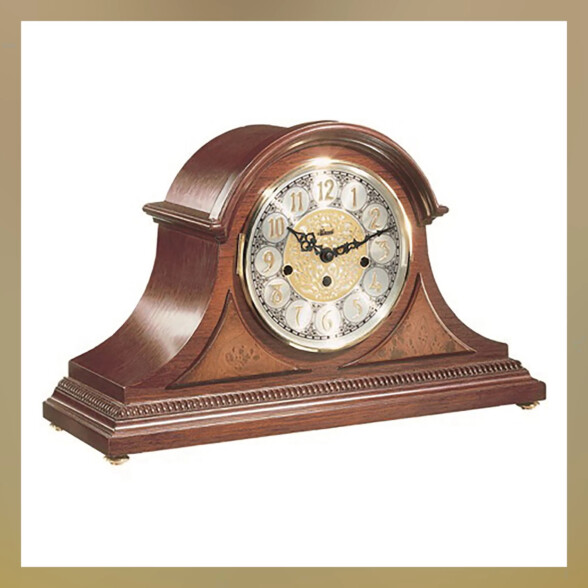
Did you know that Fragrances
Expire?
As the parts and odorous molecules of a fragrance are exposed to air, they naturally oxidize and begin to degrade. This means that, technically, as soon as you use a fragrance, it slowly begins to lose potency. Most fragrances, however, will retain their full strength for at least three to five years after being opened, and perhaps for even longer if they are high potency. Note also that as fragrances degrade, their decreasing potency will only be noticed by extremely astute observers. In general, however, it is best if you can use up fragrances before they expire.
Further Recommended Reading

Essence and Alchemy: A Natural History of Perfume by Mandy Aftel
Renowned perfumer Mandy Aftel explores the primal nature and fundamental importance of aroma in everyday life, teaching people about the nature of smell and the idea of “olfactory consciousness” in Essence and Alchemy: A Natural History of Perfume. With gorgeous illustrations, the book also serves as a practical guide to making custom scents for a variety of uses and explains the process of selecting “base notes,” “heart notes” and “head notes” to create truly personal aromas and perfumes.

The Perfume Bible by Josephine Fairley and Lorna McKay
In this lavishly illustrated, comprehensive guide to scent, beauty experts Josephine Fairley and Lorna McKay bring together everything you need to know about perfume, including guidance on which ‘scent family’ you belong to, the different strengths of perfume, the art of shopping for fragrance, 100 perfumes to try before you die plus the greatest scents ever bottled. Packed with insider info from the world’s leading experts, with interviews with some of greatest international perfumers, this is an essential companion for anyone with a passion for fragrance.

Scent and Chemistry: The Molecular World of Odours by Gunther Ohloff et al.
A textbook often used in post-secondary training, this book gives the reader all of the information they need in order to understand the complexities of scent and how it affects the people around us and ourselves. Although deeply rooted in scientific thought, it is nevertheless a fun and engaging read.
Conclusion

Now that you have learned the basics of men’s fragrances, you are prepared to become a scent sensation the next time that you decide to wear a fragrance. Whether you opt for a light spritz of a basic cologne or the heady musk of a rich perfume, we know that your olfactory awesomeness will be immediately apparent, because after all, the nose knows!
Outfit Rundown
For this video, Raphael selected as his fragrance L’Dandy from D’Orsay His jacket is a very light tone of brown oatmeal with a herringbone pattern, and three brown cuff buttons that give it a sportive feel.
He combines his jacket with a shirt that has white, yellow, blue, and brown stripes, which makes it rather bold. To keep the overall look more sedate, he combined it with a mottled dark silk knit tie with tones of blue and brown and a pocket square with hand-rolled edges, made from linen with hand-stitched x stitches. The stitches pick up the same colors of blue and yellow to create a harmonious look.
Raphaels’s trousers are navy with a faint windowpane overcheck and his shoes have the same brown tone as the buttons on his jacket. This harmony helps tie the entire ensemble together. Raphael has completed his look with navy and yellow shadow stripe socks.







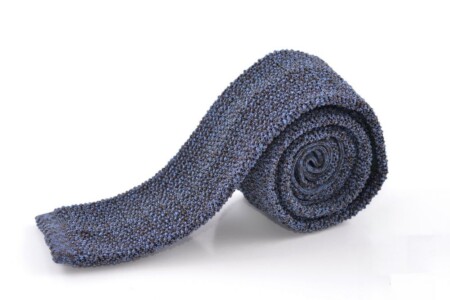
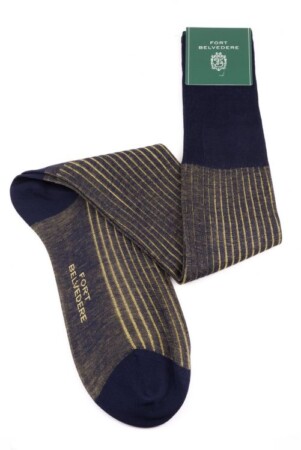
What a great article! Raf, you have outdone yourself. Encyclopedic detail, history, perspective, frankness, informative, entertaining, thorough……there should be a prize for this kind of commercial journalism. Gentleman’s Gazette has just gone from vital to indispensable.
We appreciate your kind words! Thanks for your support.
Very interesting. I was wondering where Chanel Blue falls in your opinion and or description?
Roger & Gallet for me!
@Eduardo Vargas: You are quite right. Roger & Gallet are one of the best. However, it seems they are no longer producing that family of four fragrances for men namely extra-vieille in red (reminiscent of the original Russian Imperial leather which was beaten into gloves with thin sticks), lavender in blue, vetiver in green and a very attractive yellow one which my girlfriend loved. Do you know whether they are available anywhere? I searched the top shops in London but no joy.
Re Roget & Gallet Extra-Vielle. I’ve been wearing it for over thirty years, and though I’m answering your inquiry four years later, yes – it is still available. I buy the large bottle on Amazon and that lasts me about a year. What I’ve always loved about it is its subtleness. You put it on and it’s just a tasteful whisper a few minutes later.
Did you consider partnering with an online shop to offer a bundle of samples of the recommendations or a set of samples to learn the notes or classics of a given style? It would be a great convenience!
This missive certainly makes scents!
not only is the article very informative and educational, you also get great links, a big thank you
You are welcome Simon.
The best for me is still the classic Italian pine scented PINO SILVESTRE.. Italian Victor is a close second and compared to the major brand leaders they are still quite reasonable in price
I discovered a shop in Malibu selling my new favorite, Brutus by Orto Parisi. It generates compliments but given the price I use it on special occasions. I find every single Varvatos cologne satisfying, esp the heavier darker scents for evening.
Say what you will; I’ll take cheap-ass priced Clubman aftershave over any other brand
I have to admit ever since I’ve taught myself to shave with a straight razor I also like to use Clubman, only because of it’s old time barber shop shave association. I guess I’m more of a traditionalist. Love the old fashioned way to do things.
Excellent article even for those who are familiar with a lot of the material, and the etiquette of wearing fragrances. Basenotes.net is a good source of additional information on fragrances from a large number of people who are fairly expert in this area (more or less). Villoresi Uomo is an excellent fragrance for any gentleman; and Gendarme is a good starting point for younger men 30 and under. Well done here. Thank you for this article.
Another great article!
Fragrance is very personal . For me, Creed Aventus is the best. Expensive, but worth every penny. Lasts all day.
Keep up the good work!
What are your thoughts on mixing cologne scents with that of deodorant?
I have to say vanilla fragrances are my favorite.
Thank you very much for an excellent, informative, article. I also find Truefitt and Hill range of colognes from Saint James in London. West India Limes has refreshing citrus notes while the 1805 and Clubman series are more subtle and different in character.
Once again, thank you very much for a very ‘protein’ article,
Michael
It is our pleasure.
Thank you Raphael for another informative article on an essential part of men’s style. I recently started wearing 4711 and I love it. It has such a rich scent of citrus and a subdued woody smell which is perfect for so many occasions. Also, I recently bought Yves Saint Laurent’s ‘Y’ scent which I think is a nice, classic, mild smell. I often pair with 4711 since ‘Y’ has the similar notes of bergamot and cedar.
Thank you for the comment.
My personal favorite and that of my spouse is Chanel ALLURE is a fine jewel composed of six fresh facets: bergamot, Sicilian mandarin, water lily and magnolia, Egyptian jasmine and May roses, Haitian vetiver, and finally, the velvety sensuality of Bourbon vanilla.
Thank you for sharing!
I like vetyver. My favorite was “eau de vetyver by Givenchy” it was descontinued long time ago. Now I wear “Terre d’ Hermès” and in special ocassions Sycomore by Chanel, great combination of vetyver and tabac.
Thanks for sharing!
Floris 89 or 71/72 or Trumpers Eucris for me!
Fantastic article! Penhaligon’s makes so many great scents. Glad to see you recommend it.